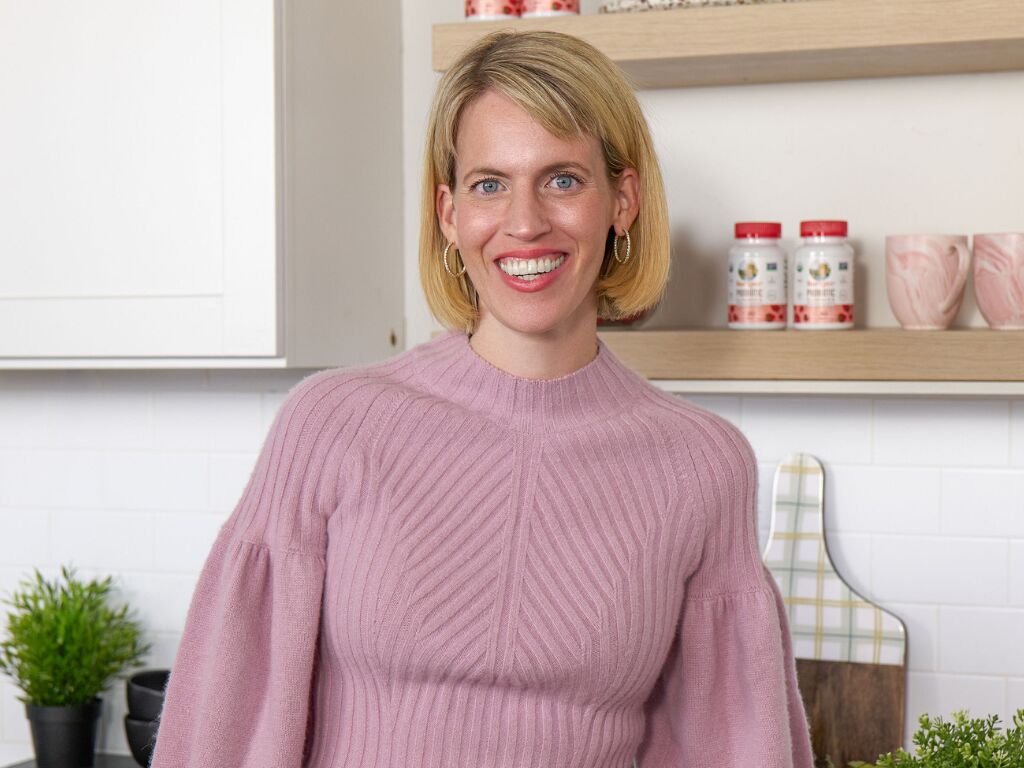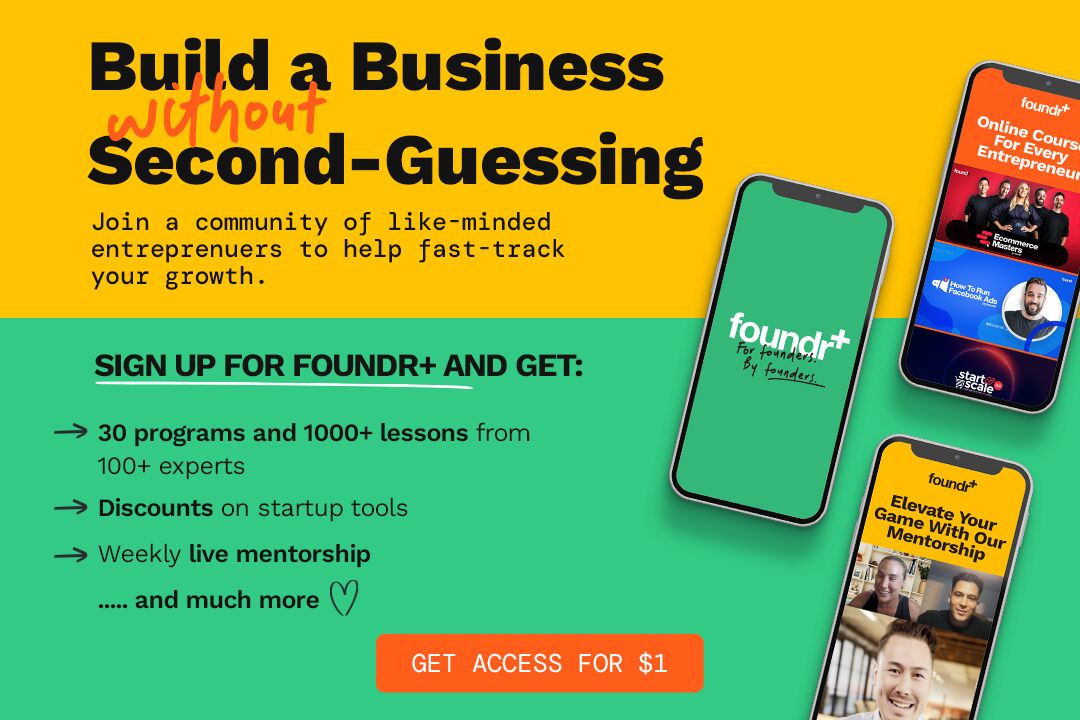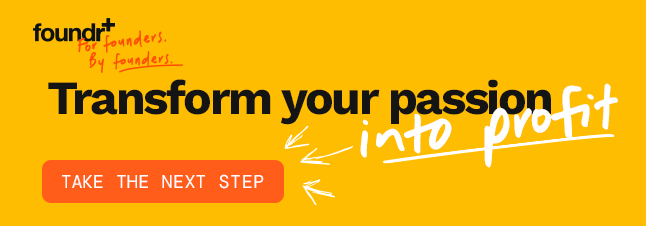No stone left unturned. MaryRuth Ghiyam, founder and CEO of MaryRuth Organics (MRO), lives by those words. To her, it means turning her attention to every customer and every employee for her brand.
“I once read something about how if you ignore someone, it releases a chemical in their brain that’s the same as a bodily injury, meaning ignoring someone is very bad.”
In 2013, Ghiyam and her mother founded MRO with a morning liquid vitamin and an evening liquid mineral product to fill a real need in the wellness market. Nine years later, she is running a multimillion-dollar company that offers herbals, sprays, and gummy vitamins, among other products. All of her products are vegan, non-GMO, and USDA-certified organic.
Ghiyam is genuinely excited to build products that help people live better lives. And while the company’s explosive success may seem to have come easy, Ghiyam worked tirelessly to overcome some serious challenges along the way.
Building a MaryRuth Organics Out of Debt
When she was just 12 years old, Ghiyam’s father passed away. Her mother took over his lumber business, and by 2008, it boasted 300 employees in several locations and $9 million in revenue. That all changed, however, after the market crash.
By 2012, she and her mother were $700,000 in debt to friends, family, and credit card companies. In the ensuing years, her 17-year-old brother died suddenly when she was a sophomore in college, and her mother was diagnosed with two benign brain tumors.
In response, Ghiyam embarked on a journey to understand how the body heals itself and came up with a health regime she called the MaryRuth Method. She details that method in her book, Liquids Till Lunch, which prescribes a diet that requires liquids only until lunchtime.
She opened a small clinic in New York City, but the money she was bringing in through the clinic wasn’t enough to get her and her mother out of debt.
As she spoke with her clients, she noticed a common complaint: Taking a vitamin capsule after having only liquids all morning causes nausea. That’s when she had her “aha” moment and came up with her first two products: MaryRuth’s Liquid Morning Multivitamin and MaryRuth’s Liquid Nighttime Multimineral.
“It’s what really put us on the map because it created a little routine for everyone,” she says. “In the morning, they take the raspberry morning multivitamin, and at night before they go to bed, they take the magnesium nighttime one for sleep. So it’s like putting these two little anchors in people’s routine within a 24-hour period.”
“It’s what really put us on the map because it created a little routine for everyone.”
In 2013, she and her mother opened MaryRuth’s Organics, and by 2014, they had 90 bottles of product to sell in her clinic and on Amazon.
Getting MaryRuth Organics Off the Ground With Amazon
First things first. She had to find a manufacturer that would produce only a small amount of product.
“I said, ‘OK, I’m going to make a product. And this product is going to be the liquid morning multivitamin,’” Ghiyam says. “And for six months, I called all the manufacturers, and no one is going to take a run for a custom blend product for 90 bottles.”
Finally, she convinced a California manufacturer to take a chance on her. “I said, ‘I promise, if you make this liquid morning raspberry multivitamin, someday we’ll be your biggest account.’”
She had the bottles shipped to her 580-square-foot apartment in New York. Her husband made a label for them. They took 60 to her office and put the rest on Amazon.
Her strategy paid off. Her private clients reviewed her vitamins on Amazon, and the algorithm bumped her to the first search page. From Day One, she says, her company was profitable.
“I remember crying the first Saturday we sold $250-worth of vitamins,” she says.“And I honestly could see a path of getting to do what I love, getting to help people deliver this amazing product. And I saw that I would not be the only one digging us out of this $700,000 in debt.”
“And I honestly could see a path of getting to do what I love, getting to help people deliver this amazing product. And I saw that I would not be the only one digging us out of this $700,000 in debt.”
She was able to pay off her credit cards and pay back everyone she owed money to with at least 8 percent interest. Her company, which now boasts 130 products, is worth more than $1 million. In 2025, she plans to take MaryRuth Organics public.
Bootstrapping It
Despite its phenomenal growth, MRO only raised outside funding for the first time this year.
There are three strategies Ghiyam attributes to their bootstrapping success. First, they set up a negative cash flow conversion cycle, much like Walmart. Second, she says, was constant patience.
“It’s so important to go slow and to be patient,” she says. “There’s a quote: Everyone overestimates what they can do in one year and underestimates what they can do in 10 years. So if I’m 37, if you go back 10 years, I’m 27. I didn’t even have a business then. And to go from such debt to a healthy company was done one day at a time in a very patient way.”
But probably the strategy with the most impact was simply to provide value for their customers through quality products and an emphasis on customer care.
“We take compliance and quality assurance very seriously,” Ghiyam says. “And then we really focus on customer care. If we take care of one person, we do a good job, they’re going to tell their friend.”
“If we take care of one person, we do a good job, they’re going to tell their friend.”
For years, she says, they didn’t even have a marketing budget.
Scaling Product Through Employee Retention
In the first four years, MRO didn’t hire any new employees.
“That’s actually how we were profitable. We would take any profit and make new products instead of hiring new employees.”
“That’s actually how we were profitable. We would take any profit and make new products instead of hiring new employees.”
And they didn’t have to—that’s how good their employee retention was. In fact, when they did start hiring four years ago to expand their team from 10 to 110 employees, Ghiyam says they lost fewer than 10 employees in all that time.
She does it through constant communication and involvement in the daily operations of the company. And she takes the time to get to know her employees from Day One.
“If you have at least under 200 employees, please get to know every single person’s name,” she says. “Get to know what seat they’re in. And if you’re using Slack, on the first day they get onboarded, it’s nice to make them a Slack voice memo that just says, ‘Hi, I’m so excited to have a second person in the IT department. We’re so excited that you’re here. If you ever need anything, please Slack me.’”
Ghiyam meets with one employee a day for 10 minutes a couple of times a week just to keep up with their lives.
“I just want to hear something about your life, if you’d like to share,” she says. “I just did one two days ago, and one of the customer care representatives was saying that both their children just went back to school, and they’re growing herbs in their garden. And they’re going to donate the herbs to a special location.”
She also holds company culture meetings once a month, as well as anonymous surveys and a suggestion box, to give employees every opportunity to raise issues.
The company gives bonuses every year. And this year, they rolled out a long-term incentive program for employees.
“I’m very, very involved operationally,” she says. “We have an org chart at our company, but I still like to insert myself in meetings that maybe traditionally a CEO would not be in, in order to really gauge what is the collective consensus of how our employees are feeling.”
On top of all that, Ghiyam personally runs a book club, as well as fun lunches, karaoke, trivia, and scavenger hunts. She also teaches classes on one topic she is very passionate about: time blocking.

Time Blocking: Step-by-Step Success
“With any challenge or any problem,” Ghiyam says, “you don’t have to know the answer. But you have to manage your time correctly.”
For the last 15 years, Ghiyam has used time blocking to organize her business and her family life. With time blocking, Ghiyam organizes her day into time blocks to accomplish specific tasks.
“I actually calculated that I’ve done time blocking for over 130,000 hours,” she says. “Time blocking really allowed me to never lose momentum or motivation and connect small micro-actions to a macro-dream or viewpoint.”
“Time blocking really allowed me to never lose momentum or motivation and connect small micro-actions to a macro-dream or viewpoint.”
Ghiyam has made time blocking journals for all of her employees and run classes on how to use them.
“What’s most important is that so many challenges come up, and you don’t get to do everything that you set out to do every day at all. … And so you just keep shifting all the priorities to the next time blocking sheets.”
In It for the Long Run
While some founders may be looking for a buyout and the next big startup, that’s not Ghiyam. When it comes to MRO, she is 100 percent engaged and in it for the long haul.
“I want to be part of my company for the next 60 years. I think if I couldn’t wake up every morning and do this, it would feel like I had a lot of energy and nowhere to use that energy. And I hope that we can help so many people just go to their next level.”
She genuinely enjoys teaching her book clubs, attending fun lunches, and hearing about the lives of her team. She gets back to every employee who sends her a message and responds to between 20 and 30 messages from customers every evening.
Her marketing message is simple: “‘I’m here. My whole team is here. We want to answer all your questions. We want to help you.’ And, for me, that works.”


















